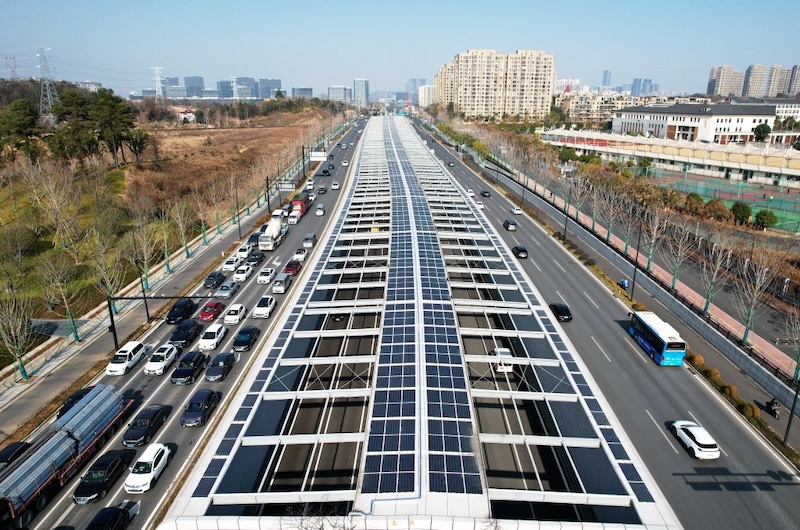This post was originally published on Eco Watch
In Switzerland, highway noise barriers surrounding the Oberland Autobahn near Wangen-Brüttisellen will soon provide solar power.
Last year, Switzerland’s Federal Roads Office made the surfaces of highway noise barriers free and set out to cover 350 of them in solar panels. Swiss officials estimated that the arrays could generate 100 gigawatt hours of clean energy per year, CleanTechnica reported.
The project is now kicking off with the first two privately owned solar arrays for the A15 Oberland motorway, which will be completed over the first half of 2025. As TA Zurich reported, these photovoltaic installations are expected to provide about 500,000 kilowatt hours of electricity per year.
The first solar arrays will be operated by Lima Solar AG, which has had to overcome several hurdles before starting the installation, including finding low-cost, low-glare panels that won’t distract drivers.
However, despite the hurdles, the company has now paved the way for other noise barrier solar projects to move forward at a faster pace.
One ongoing challenge involves connecting the private solar arrays to the electric grid, particularly in more rural areas, and establishing a marketplace for the generated power. As TA Zurich reported, covering the noise barriers alone would only provide a limited amount of clean energy for residents.
However, Switzerland passed a law in 2023 requiring new buildings with 3,300 square feet (300 meters) or more of roof space to install solar panels. In 2024, Zurich passed a law requiring solar panels on buildings, new or old, with roofs at least 3,300 square feet by 2040.
By installing more panels in already developed spaces that are otherwise unused, Switzerland is incorporating more efficient and affordable ways to install solar.
There has been promising research on the benefits of adding photovoltaic installations along highways to power local communities and support EV charging infrastructure.
A study published in November 2023 found that deploying solar panels on highway noise barriers along highways in the Netherlands could provide around 200 gigawatt hours per year of energy. Further, the study determined that solar energy along highways, both on noise barriers and on public lands around highways, could supply enough power for highway EV charging stations to charge more than 300 electric vehicles per day, which would meet about 80% of expected demand by 2030.
According to a study published in August 2024, installing solar panels overtop of highways could be an effective way to reduce both emissions and traffic accidents. The report found that installing highway solar panels globally could reduce carbon emissions by about 28%. By putting solar arrays over highways, the researchers of that study estimated a reduction in global traffic deaths by about 10.8%, because the solar panels would protect the highways from precipitation.
As the project along the Oberland Autobahn revealed, there are still challenges to low-glare solar panel costs and delayed governmental approval processes, but as more companies work to establish these types of systems, the cost and time to complete the projects is expected to decline.
The post Switzerland to Add More Solar Power to Rooftops and Highway Noise Barriers appeared first on EcoWatch.





0 Comments